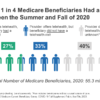New research has found only 14% of children aged three to four years old are getting adequate physical activity, sleep and time away from screens.
The analysis, led by the University of Wollongong (UOW) and supported by the University of Stirling’s Dr. Simone Tomaz, examined 7,017 children, aged three to four, across 33 countries, with the aim of providing a comprehensive snapshot of their health and activity levels around the world.
The World Health Organization (WHO) evidence-based global Guidelines on Physical Activity, Sedentary Behavior and Sleep for Children Under 5 Years of Age, recommends that children aged three to four years old should, in a 24-hour period, undertake at least 180 minutes of physical activity, of which 60 minutes should be moderate to vigorous intensity, have less than an hour of sedentary screen time, and receive 10 to 13 hours of good quality sleep.
While the researchers noted differences between sexes, regions, and country income levels, the universal finding was that most children were not getting enough movement and were spending too much time on screens.
Dr. Kar Hau (John) Chong, an Associate Research Fellow in the School of Health and Society at UOW, was the lead author of the research, which is published in JAMA Pediatrics, and said the findings were concerning as early childhood was the best time to establish the foundation of healthy habits.
He said, “Staying active, getting enough sleep, and resting when necessary are incredibly important for a child’s overall development, physically, mentally, emotionally, and socially. These behaviors impact how a child grows and thrives.
“We know that early childhood, under the age of five, is a critical window to establish lifelong habits. Yet most children do not receive enough physical activity and spend too much time on screens. This really shines a light on a big public health concern that could affect everyone’s health and well-being in the future if we don’t take the steps to address the issue.”
The data revealed inequalities in the children’s movement behaviors around the world, with slightly more children in low- and lower-middle-income countries, at 16.6%, meeting the WHO guidelines than in high-income countries, at 14.4%.
The region of Africa saw the highest percentage of children meeting the guidelines, at 23.9%, while the Americas saw the lowest, at just 7.7%.
Dr. Simone Tomaz, Lecturer in Exercise Physiology at the University of Stirling, was a post-doctoral researcher on the project while at the University of Cape Town.
She said, “It goes without saying that children under the age of five years—whether they are growing up in Scotland or South Africa—thrive when they are in an environment that encourages healthy sleeping behavior and provides opportunities to be physically active. While there is still plenty of work to be done, the continued effort to gather an understanding of sleep, physical activity and screen time in young children across the globe puts us all in a better position to optimize these health-related behaviors.”
Dr. Chong said the findings must be used to inform policy that boosts the movement behaviors of children, but change does not exist in a vacuum.
He said, “We need to understand the factors that influence these behaviors in children from different sociocultural settings before we begin to implement contextually appropriate programs and policies to encourage more movement, less sedentary, and have adequate sleep.
“It is essential to adopt a holistic approach where parents, educators, policymakers, and communities must work collaboratively to create environments that support children to meet the guidelines. The health of future generations depends on solving these global problems.”
The paper, “Pooled analysis of physical activity, sedentary behavior and sleep among children from 33 countries,” was written by more than 40 authors from universities across the world.
Dr. Tomaz continues to work on understanding physical activity and health for children and young people in Scotland and earlier this year published the research paper “A systematic evaluation of physical activity and diet policies in Scotland: results from the 2021 Active Healthy Kids Report Card.” She was also involved in data collection and analysis for research which found that the COVID-19 pandemic had exacerbated shortfalls in children’s physical activity both in Scotland and around the world.
The report by the Active Healthy Kids Global Alliance (AHKGA) compared 57 countries from six continents to assess global levels and trends in child and adolescent physical activity. The University of Strathclyde is the Scotland lead for the study, working alongside the Universities of Stirling and Aberdeen, Robert Gordon University, and the MRC/CSO Social and Public Health Science Unit at the University of Glasgow.
More information:
Kar Hau Chong et al, Pooled Analysis of Physical Activity, Sedentary Behavior, and Sleep Among Children From 33 Countries, JAMA Pediatrics (2024). DOI: 10.1001/jamapediatrics.2024.3330
Provided by
University of Stirling
Citation:
Only 1 in 10 children meet global health guidelines, researchers discover (2024, October 1)



